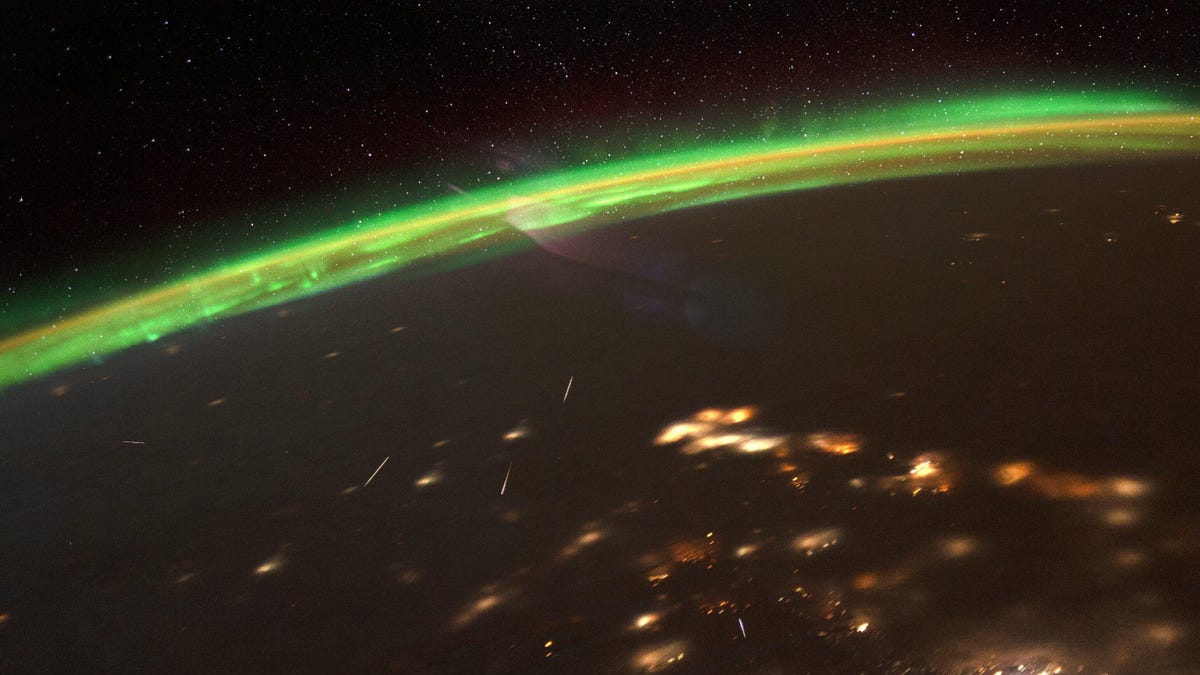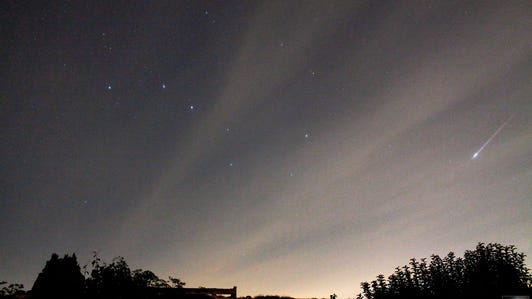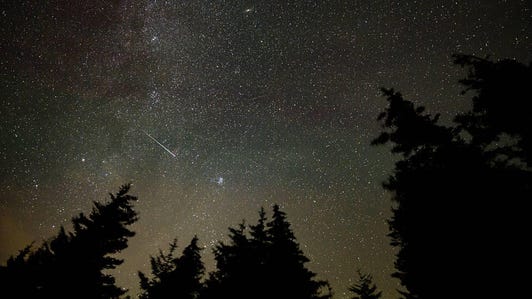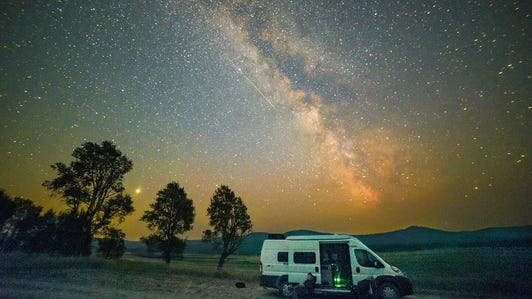
Astronauts on the International Space Station caught Quadrantids from orbit in 2020.
NASA/Christina Koch
![]()
The first few months of the year have a relative dearth of meteor showers, so it’s worth planning to catch the Quadrantids during their very short peak just after New Year’s.
While December is packed with opportunities to catch abundant Geminid and Ursid meteors, the Quadrantid meteor shower is the sole major shower in the first quarter of the year, and it peaks quite briefly Tuesday night and Wednesday morning this week.
Like the Geminids and Ursids, the Quadrantids are often among the strongest showers of the year, but these meteors don’t get nearly as much hype as the northern summertime Perseids in August that hit during summer vacation time for many skywatchers. Also, the window of opportunity to see Quadrantids is very narrow, with a peak of intense activity that is just six hours long this year, according to the American Meteor Society.
Other showers may have peaks that last a day or two, with a lesser but still decent amount of activity stretching for days before and after the actual peak.
Stellar 2021 Perseid meteor shower shines in shots from around the world






+12 more
See all photos
If you’re hoping to catch the Quadrantids this year, there’s two factors to consider: what time the shower will be peaking in your location and how high the quadrant of the night sky where Quadrantid meteors appear to originate from will be at that time.
Predicting the exact moment of peak activity for a meteor shower offers no guarantees, but the target range for best viewing times is between 3:40 a.m. and 6:40 a.m. UTC on Jan. 4 (7:40 p.m. to 10:40 p.m. PT on Tuesday). That said, the area of the sky that Quadrantids radiate outward from is in the area of the constellation of Bootes the herdsman, and this radiant is highest in the sky between about 2 a.m. and 6 a.m. local time.
Find where these two windows overlap in the Northern Hemisphere (the radiant will be mostly below the horizon south of the equator, unfortunately) and you’ve got the best spots on the planet for observing the Quadrantids. This looks to be just about any locale in or near the North Atlantic. But again, peak predictions aren’t exact, so it’s worth venturing out to see what you can spot from just about anywhere with clear skies in Europe or North America on Tuesday night or Wednesday morning.
Head outside with plenty of refreshments and warm clothes and give yourself at least an hour for the whole viewing experience. You’ll need about 15 minutes for your eyes to fully adjust and plenty of time to spot shooting stars, which inevitably seem to come in short bursts after long lulls in activity.
Lie on your back with a wide view of the clear sky and orient yourself to the northeast to face the right radiant. You can expect to see about 25 Quadrantids per hour under ideal conditions, including plenty of fleeting shooting stars and a few fireballs, if you’re lucky. You could get lucky with an outburst of Quadrantids that produces up to 120 meteors per hour, according to some predictions.
One potential challenge is that the moon will be about 92% full Wednesday morning, so you may need to adjust your viewing plan to put the bright moon at your back.
What you’re actually seeing when a Quadrantid meteor streaks across the sky is a mote or pebble-size piece of the Asteroid 2003 EH1, which some astronomers believe may be an extinct comet or a new type of object sometimes called a “rock comet.” Over the centuries, EH1 has left a trail of debris in its path and our planet passes through that stream of detritus each January.
If the weather cooperates where you are, consider making the effort to get outside and look up early Wednesday, because the next major meteor shower isn’t until April.
